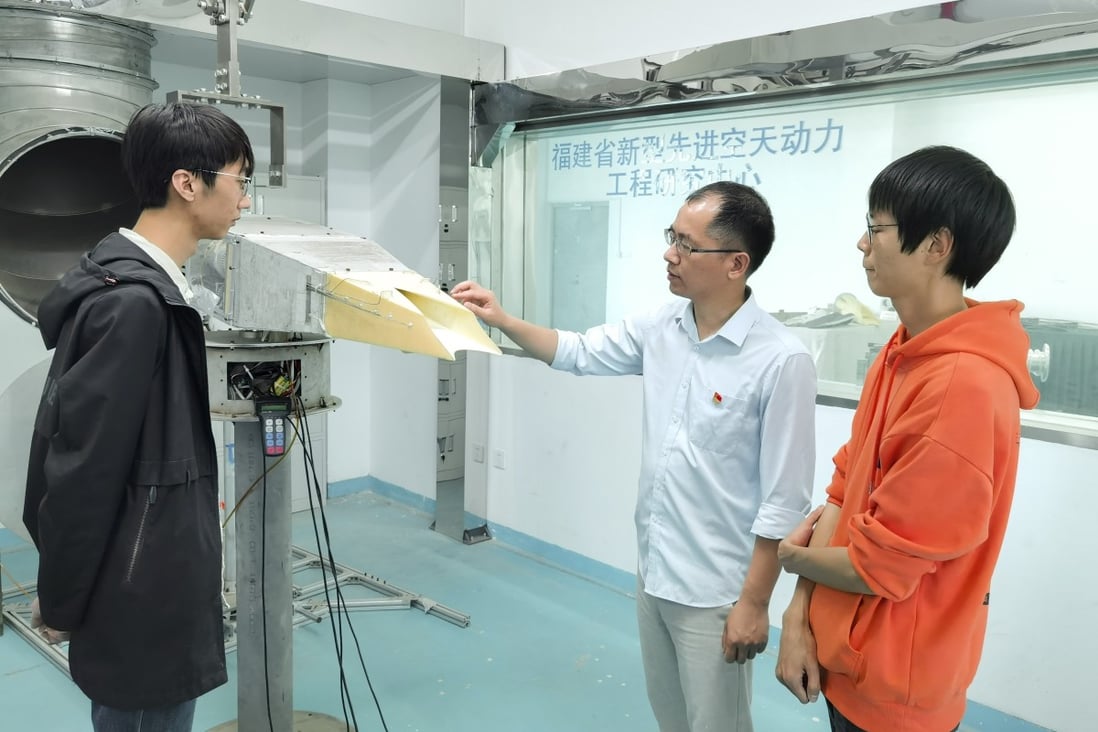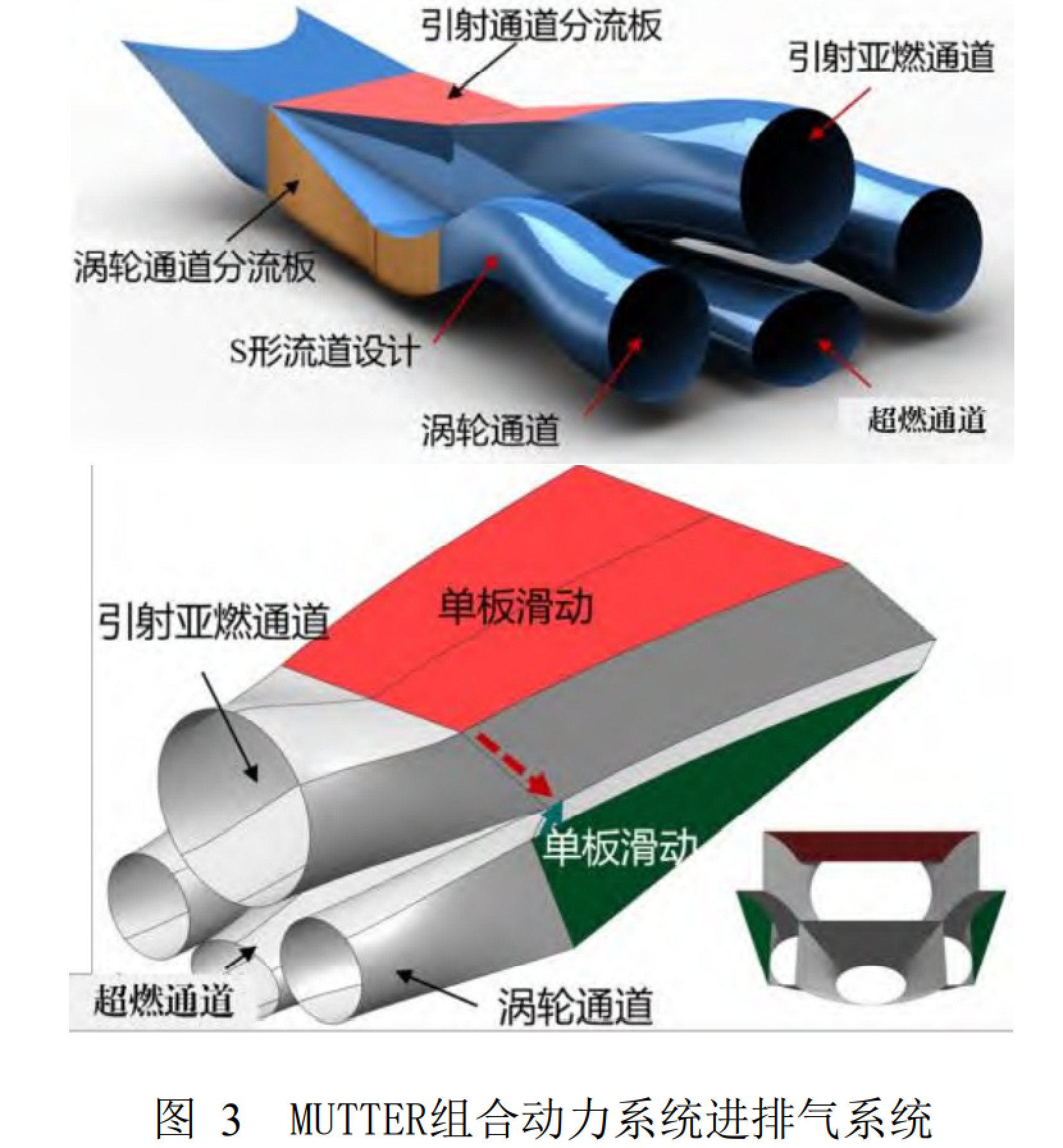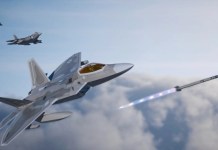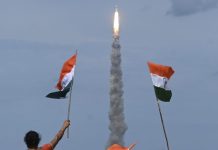China has completed the initial testing of a small hypersonic prototype aircraft for civilian use, paving the way for developing a full-sized hypersonic aircraft that can travel six times the speed of sound.
The first phase of testing for the Nanqiang No. 1, a model that will probably serve as a technology demonstrator for a hypersonic airliner, is now complete. The model, referred to as a prototype, has undergone testing in a lab in the Chinese province of Fujian.
According to the report, the crewless aircraft weighs just 500 kilograms (1,100 pounds). Scientists working on the project hope to complete the test program and move on to building a flyable prototype by 2025.
The report does not specify what types of tests were carried out. However, a photograph attached to the report indicates that it was wind tunnel testing. Test flights are expected to be completed by 2025, Hong Kong-based SCMP reported.

Turbofan, rockets, and ramjet engines will propel the rocket. It will have space for up to 10 passengers and be able to travel at up to Mach 6 speeds (six times the speed of sound). By 2035, the production of the unnamed Chinese hypersonic airliner is anticipated to begin, the report explained.
Lead project scientist Yin Zeyong stated in a paper published in Acta Aeronautica et Astronautica Sinica, a peer-reviewed journal run by the China Society of Aeronautics and Astronautics, “the breakthrough of this technology will greatly shorten the round-the-world flight time,” the report added.
“It can change human civilization,” said Yin, director of science and technology with the Aero Engine Corporation of China. According to Yin’s team, hypersonic flight technology could reduce global travel time to under two hours.
A Unique Power System
Major military powers like Russia, China, and the US have been developing hypersonic technology up until now.

A hypersonic missile can strike a valuable target before most missile defense systems respond. However, many private companies are currently working on developing hypersonic technology for future civilian applications.
There is a fierce race among many nations to develop hypersonic technology. By 2035, China plans to create a small fleet of crewed hypersonic aircraft that can reach any location on Earth in a matter of hours.
Almost all Chinese hypersonic aircraft programs are still under wraps. The study by Yin and his colleagues at Xiamen University in southeast Fujian Province provided a rare window into the technical path and advancement in this sensitive field.
Nanqiang No. 1 uses a cutting-edge combined cycle engine known as MUTTER (multi-ducted twin-turbines ejector-ramjet/scramjet). This unique power system consists of two air-breathing ramjet or scramjet engines, a small rocket, and two turbine engines.

It is more complex than most previous proposals for hypersonic flight vehicles. Some experts were against the idea because adding the rocket could make the aircraft too heavy for a lengthy flight.
The MUTTER design was still pursued by Yin’s team along with several improvements to increase flight efficiency, such as requiring three different engine types to share a single air inlet. Early test flights, ground testing, and computer modeling indicated that the concept worked.
According to the researchers, the two turbines could deliver a strong thrust at speed under Mach 2 when taking off from a runway. Even though it is a small rocket engine, it would propel the aircraft to Mach 4. The aircraft would then start its main ramjet and sub-ramjet, accelerating it to a cruising speed of Mach 6.
Challenges Ahead
Yin’s team kept the plane below the speed of sound during the initial test flights, which began in 2019. By the time the group finished writing the paper, the work had progressed to the second stage, increasing the speed to Mach 4.
The construction of a full-sized passenger plane weighing 72 tons would likely begin in 2025. The project is also fraught with difficulties. For instance, it is unclear whether the small rocket engine can be reused after being tested in extreme conditions.
A hypersonic airliner would carry ten adult passengers, accounting for only about 2% of its total weight. Yin believes that for the technology to be commercially appealing, it must be more efficient. In an emergency, the researchers must also develop an effective plan for slowing down and landing the aircraft quickly.

Nevertheless, China is among countries that have made significant investments in hypersonic vehicles. The hypersonic airliner project follows earlier announcements of multiple hypersonic weapon tests in the country.
Besides that, several Western companies, including Hermeus and Exosonic, have declared that they are currently working on developing hypersonic aircraft that could be utilized for both military and civilian purposes.
- Contact the author at ashishmichel@gmail.com
- Follow EurAsian Times on Google News




